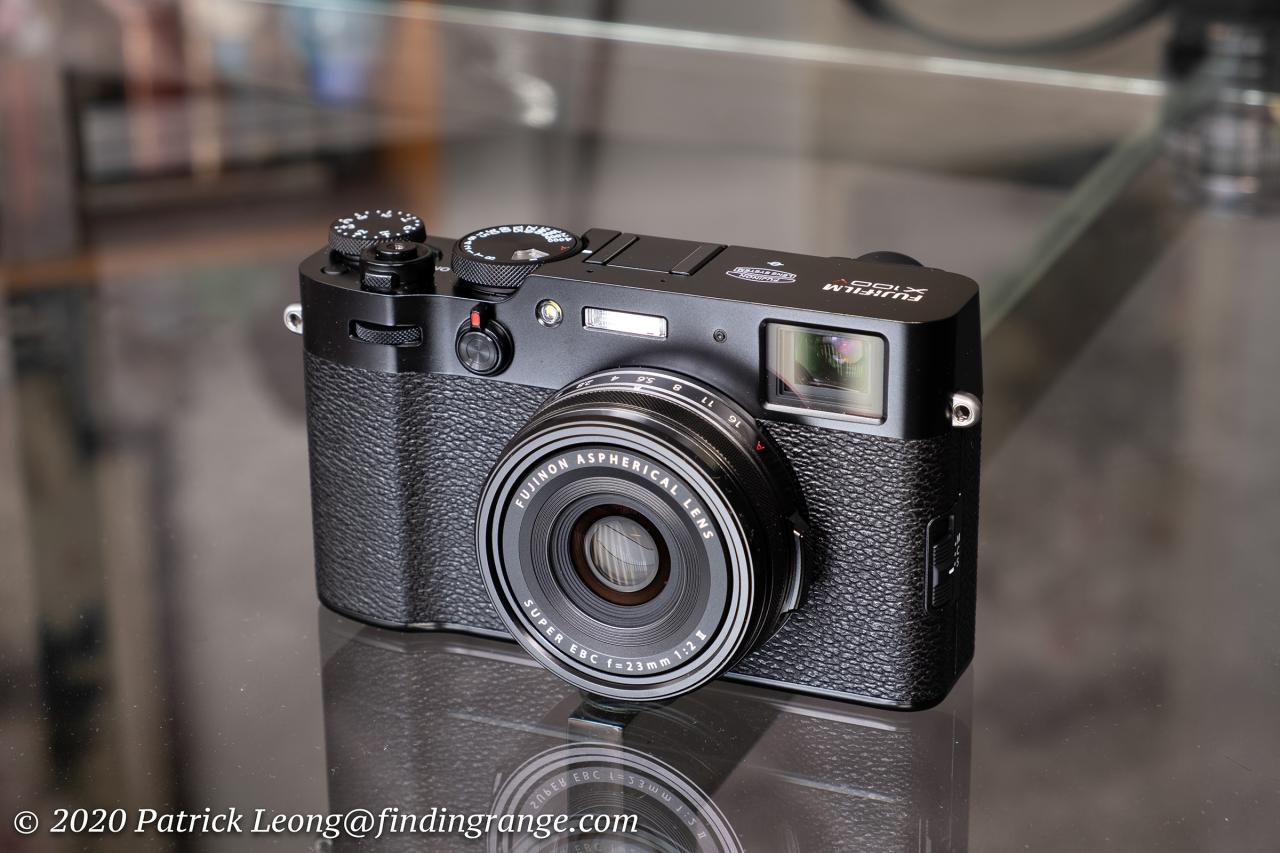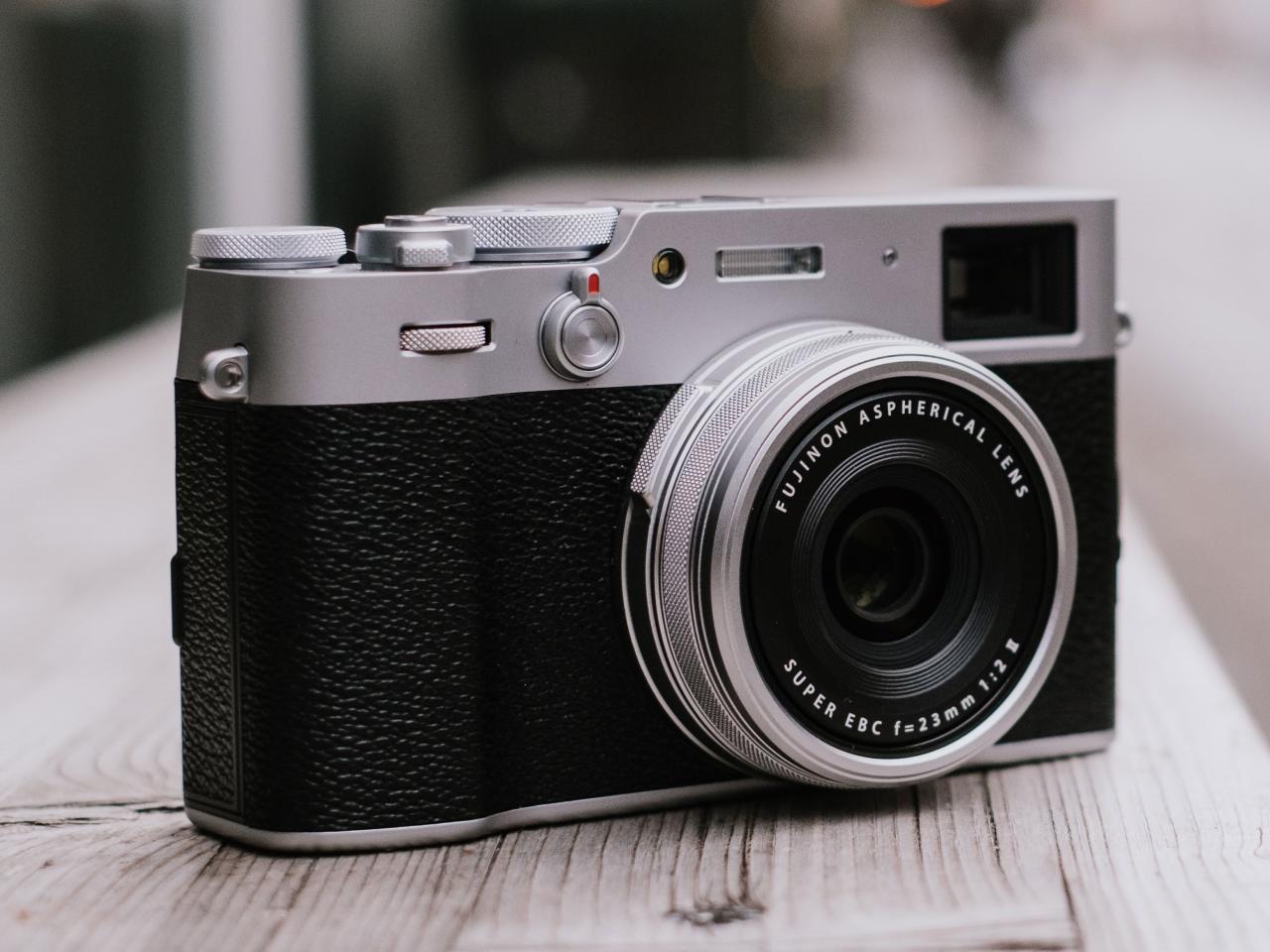Fujifilm X100V: The camera seamlessly blends classic aesthetics with cutting-edge technology, appealing to both seasoned photographers and enthusiastic newcomers. Its compact form belies a powerful sensor and a versatile lens, making it a compelling choice for street photography, travel, and everyday shooting. This review delves into the X100V’s capabilities, exploring its image quality, user experience, and overall performance, providing a balanced perspective on this celebrated camera.
We will examine its features in detail, comparing it to its predecessors and competitors to determine its strengths and weaknesses. From its exceptional image quality and intuitive controls to its compact design and versatile lens, we aim to provide a thorough understanding of what makes the Fujifilm X100V a highly sought-after camera.
Fujifilm X100V: A Deep Dive
The Fujifilm X100V, a compact camera with a retro aesthetic and impressive capabilities, has cemented its place as a favorite among both professionals and enthusiasts. This detailed review explores its features, image quality, user experience, lens performance, video capabilities, and how it stacks up against competitors.
Camera Features and Specifications
The X100V boasts a 26.1MP X-Trans CMOS 4 sensor, a significant upgrade from its predecessors. Its autofocus system, utilizing phase detection pixels across the sensor, delivers fast and accurate focusing, even in challenging low-light conditions. While not offering in-body image stabilization (IBIS), its effective lens stabilization minimizes camera shake, though it’s less effective than IBIS found in some competitors.
| Feature | X100 | X100F | X100T | X100V |
|---|---|---|---|---|
| Sensor | 16.3MP X-Trans CMOS I | 24.3MP X-Trans CMOS III | 24.3MP X-Trans CMOS IV | 26.1MP X-Trans CMOS 4 |
| Processor | EXR Processor II | X-Processor Pro | X-Processor 4 | X-Processor 4 |
| Autofocus | Contrast Detection | Hybrid AF | Hybrid AF | Hybrid AF |
| Lens | 23mm f/2 | 23mm f/2 | 23mm f/2 | 23mm f/2 |
Image Quality and Performance

The X100V’s dynamic range is excellent, capturing detail in both highlights and shadows even in high-contrast scenes. Its renowned Fujifilm color science, with its film simulations like Classic Chrome and Acros, produces images with a unique character and pleasing tones. JPEGs from the camera benefit from optimized processing, while RAW files offer maximum flexibility for post-processing.
For example, a landscape shot using Acros film simulation would render deep blacks, rich details in the shadows, and a slightly muted color palette with exceptional sharpness. A street portrait captured in Classic Chrome would showcase natural skin tones and subtle color shifts. High ISO performance is generally good, with noise becoming more visible at higher settings but remaining relatively manageable.
- Strengths: Excellent color science, wide dynamic range, good high ISO performance, sharp lens.
- Weaknesses: Noise can be visible at very high ISO settings, JPEG processing can sometimes over-sharpen fine details.
User Experience and Ergonomics
The X100V’s compact body is a joy to hold and use. The physical controls, including the aperture ring, shutter speed dial, and focus ring, are intuitive and responsive. The menu system, though initially seeming complex, is well-organized and easily mastered with some practice. Its retro design, while aesthetically pleasing, might not appeal to everyone.
| Pros | Cons |
|---|---|
| Intuitive physical controls | Small size may make one-handed operation challenging for some users |
| Retro design | Menu system can seem complex to beginners |
| Durable build quality | Limited button customization options |
Lens and Functionality
The X100V’s 23mm f/2 lens (35mm equivalent) is a marvel of engineering. Its sharpness is exceptional across the frame, even at wide open apertures. Distortion is minimal, and the lens renders pleasing bokeh. Its versatile focal length is ideal for street photography, portraits, and landscapes.
The Fujifilm X100V’s compact size makes it ideal for street photography, capturing candid moments with its exceptional image quality. For broader perspectives, however, one might consider using a drone like the black falcon 4k drone canada for stunning aerial shots. Then, you can seamlessly integrate those breathtaking drone images with the intimate street photography from your X100V for a truly compelling visual narrative.
For instance, a portrait taken at f/2 would showcase a beautifully blurred background, drawing attention to the subject. A landscape shot at f/8 would capture sharp detail from foreground to background. Low light performance is also strong, enabling handheld shooting in dimly lit environments.
The 23mm f/2 lens is a standout feature of the X100V, offering exceptional image quality and versatility.
Video Capabilities

The X100V records 4K video at up to 30fps and 1080p at up to 120fps. Video quality is generally good, with decent dynamic range and detail. Film simulations can be applied to video footage, adding a unique aesthetic. However, it lacks advanced video features found in some dedicated video cameras, such as internal stabilization and advanced audio options.
Competitor Comparison, Fujifilm x100v

Compared to cameras like the Ricoh GR III, Sony RX1R II, and Canon PowerShot G7 X Mark III, the X100V offers a distinct blend of image quality, user experience, and retro aesthetics. The Ricoh GR III emphasizes simplicity and a slightly wider focal length, while the Sony RX1R II boasts superior high-resolution capabilities. The Canon G7 X Mark III offers more advanced video features.
The choice ultimately depends on individual priorities.
The Fujifilm X100V, with its exceptional image quality and compact design, is a favorite among street photographers. Its ability to capture candid moments is unparalleled, much like the stealth capabilities of the shahed drone , though on a much smaller scale, of course. Returning to the X100V, its intuitive controls make it a joy to use, ensuring that you’re always ready to capture that perfect shot.
| Feature | Fujifilm X100V | Ricoh GR III | Sony RX1R II | Canon PowerShot G7 X Mark III |
|---|---|---|---|---|
| Sensor Resolution | 26.1MP | 24.2MP | 42.4MP | 20.1MP |
| Lens | 23mm f/2 | 28mm f/2.8 | 35mm f/2 | 24-100mm f/1.8-2.8 |
| Video | 4K/30p | 4K/30p | 4K/30p | 4K/30p |
The Fujifilm X100V emerges as a compelling option for photographers seeking a balance of classic design, exceptional image quality, and user-friendly functionality. While certain limitations exist, particularly regarding video capabilities compared to more modern offerings, its strengths in image quality, compact form, and intuitive controls outweigh these drawbacks for many. Its enduring appeal lies in its ability to seamlessly blend nostalgia with modern technology, delivering a truly satisfying photographic experience.
Essential FAQs
Does the Fujifilm X100V have image stabilization?
No, the X100V lacks in-body image stabilization. However, its fast lens and generally sharp images help mitigate the effects of camera shake.
What type of battery does the X100V use?
It uses the NP-W126S battery.
Can I use external microphones with the X100V?
Yes, it has a 2.5mm microphone jack for external audio recording.
What is the maximum video recording time?
The maximum recording time is limited by card capacity and internal buffer, but generally, you can record for extended periods.
